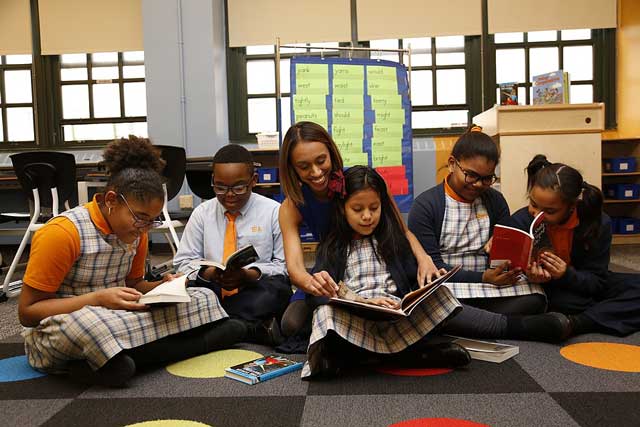
Charter schools and school choice can no longer be classified as experiments in school improvement. They have become mainstream components of public education systems from coast to coast. A recent look at public education in Oakland raises important questions about whether maximizing choice comes at the cost of equity.
Choice advocates have said all students would benefit from maximizing a parent’s ability to choose their child’s school. The introduction of independent charter schools, they believe, harnesses market forces to reward better schools and ultimately force poor schools to close. Following this logic, we will be left with better schools. But while charter schools can focus only on the students who choose their programs, traditional school districts remain responsible for all of the children in their districts. When funding follows each student to their school of choice, those choosing to remain in public schools are finding themselves resource-starved. Overall, educational equity and school choice may not be able to coexist.
A study conducted by University of Oregon researchers and commissioned by the nonprofit public-school advocate In The Public Interest found that Oakland’s 40 charter schools, serving 15,500 students, cost the district more than $57 million. Professor Gordon Lafer, one of the study’s authors, told Jill Tucker at SFGate,
The high costs of charter schools have led to decreases in neighborhood public schools in counseling, libraries, music and art programs, lab sciences, field trips, reading tutors, special education funding, and even the most basic supplies like toilet paper. Unlimited charter school expansion is pushing some of California’s school districts toward a financial tipping point, from which they will be unable to return.
Because they retain responsibility for all students in their catchment area, public districts may have unusual demands to fulfill, while each charter has only its own business and educational plan. Reliance on geographic scope means neighborhood geography and community concerns are significant to the public district.
Sign up for our free newsletters
Subscribe to NPQ's newsletters to have our top stories delivered directly to your inbox.
By signing up, you agree to our privacy policy and terms of use, and to receive messages from NPQ and our partners.
Traditional public schools have a level of public accountability that is not mirrored by charter schools. When a charter school fails, as many do, the public system must be able to continue to serve the closed school’s students. The cost of meeting these unique expectations increases the cost of education and makes budget reductions that are based solely on head counts difficult if not impossible. Tucker reports,
District officials say…charters can turn students away when full…which traditional districts can’t do…charters serve disproportionately fewer special needs students, especially those with the most severe disabilities. And in Oakland, for example, the district serves far more newcomer students who arrive mid-year, many who are unaccompanied minors who don’t speak English and who are years behind academically.
Charter and choice supporters discount the impact of these forces. A statement from the California Charter School Association discounted the study’s findings, saying,
This report is yet another tactic by special interests to prioritize politics over kids—it is pure propaganda and is far from impartial. Local districts must own their role as fiscal stewards responsible for their budgets and stop ignoring the hard decisions that lie ahead—like crushing unfunded pension liabilities or underused facilities—and come up with a range of solutions that ultimately benefit all public students.
Expanding charters and choice increases the importance of each individual student’s experience over the shared experience of all students. As University of Cincinnati professor Sarah M. Stitzlein recently observed in an Education Week op-ed, “When individuals focus only on themselves, they are often unable to see when their desires conflict with the needs of others. Students who exit traditional public schools take funding with them, but don’t often see the resulting effects. This depletes the resources for the remaining children.” It is this responsibility that public school districts and leaders are asked to fulfill and charter schools can ignore. Marketplaces expect winners and losers. The children of each school district can’t become collateral damage.—Marty Levine













